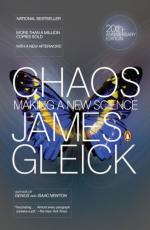
|
| Name: _________________________ | Period: ___________________ |
This test consists of 5 short answer questions, 10 short essay questions, and 1 (of 3) essay topics.
Short Answer Questions
1. In what year did Benoit Mandelbrot recognize the ghost of an idea when he spotted a diagram charted out on the blackboard in Hendrik Houthakker's office?
2. In mathematics, what is a system which does not satisfy the superposition principle, or whose output is not directly proportional to its input?
3. What is a branch of physics which employs mathematical models and abstractions of physics to rationalize, explain and predict natural phenomena?
4. What refers to a change in the basic assumptions within the ruling theory of science?
5. When was the Massachusetts Institute of Technology founded?
Short Essay Questions
1. What did Benoit Mandelbrot and Hendrik Houthakker agree on about the chart in Chapter 4, "A Geometry of Nature"?
2. In Chapter 2, "Revolution" Gleick refers to the pendulum as being the laboratory mouse of chaos, the new science. What metaphorical examples does Gleick give for other great scientists in this chapter?
3. How is James Yorke described in Chapter 3, "Life's Ups and Downs"? What term did he coin?
4. How is the relationship between meteorologists and computers described in Chapter 1, "The Butterfly Effect"?
5. What variable changed the outcome in the experiment described by Thomas S. Kuhn in Chapter 2, "Revolution"?
6. How is Edward Lorenz described in Chapter 1, "The Butterfly Effect"? Where was he working at the time?
7. Describe the weather simulator discussed in Chapter 1, "The Butterfly Effect." What weather conditions did it create?
8. What psychological experiment does Thomas S. Kuhn describe in Chapter 2, "Revolution"?
9. How did Benoit Mandelbrot describe the ideal data source in Chapter 4, "A Geometry of Nature"?
10. What impact did The Structure of Scientific Revolutions have on the scientific community? What did Kuhn assert in the book?
Essay Topics
Write an essay for ONE of the following topics:
Essay Topic 1
Describe and discuss the Cantor set and the Noah and Joseph Effects. What is Cantor Dust and how was it discovered?
Essay Topic 2
Define and discuss turbulence and the problems its discovery created for scientists and physicists. How is turbulence dealt with today by science?
Essay Topic 3
Describe and discuss Edward Lorenz and his weather simulator at MIT. What effects did the weather simulator create? What led to the machine's breakdowns?
|
This section contains 901 words (approx. 4 pages at 300 words per page) |

|




